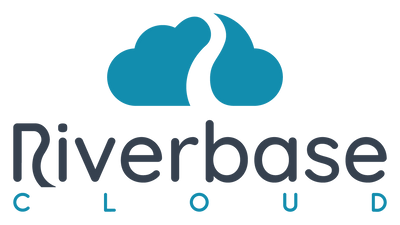The Power of Now: Changing Campaigns Through Instant Insights
Real-time advertising analytics is the practice of collecting, processing, and analyzing marketing data as it happens, enabling immediate campaign adjustments and optimization. Unlike traditional analytics that may take hours or days to deliver insights, real-time systems provide actionable data within seconds or milliseconds.
What is real-time advertising analytics?
- Definition: The ability to process and measure advertising data as it arrives in your database
- Speed: Completes within 300 milliseconds for programmatic bidding environments
- Purpose: Enables immediate data-driven decisions to improve campaign performance
- Benefits: 60% of business leaders report increased customer retention through real-time analytics
- Challenge: Only 22% of organizations effectively use the analytics data they have
Real-time advertising analytics transforms campaigns by providing instant feedback on performance, allowing marketers to adjust tactics on the fly rather than waiting for post-campaign reports. This immediate insight capability means you can optimize your ad spend, creative elements, and targeting parameters while campaigns are still running.
In today's digital landscape, waiting even a few hours for data can mean wasted budget and missed opportunities. By implementing real-time analytics, you can identify underperforming ads, shift budget to high-performers, and respond to emerging trends before your competitors.
I'm Gary Gilkison, founder of Riverbase Cloud with extensive experience implementing real-time advertising analytics systems that have helped businesses increase ROI by changing raw data streams into actionable insights that drive campaign performance. Throughout my career working with both startups and enterprise clients, I've seen how real-time advertising analytics creates competitive advantages through faster decision-making.
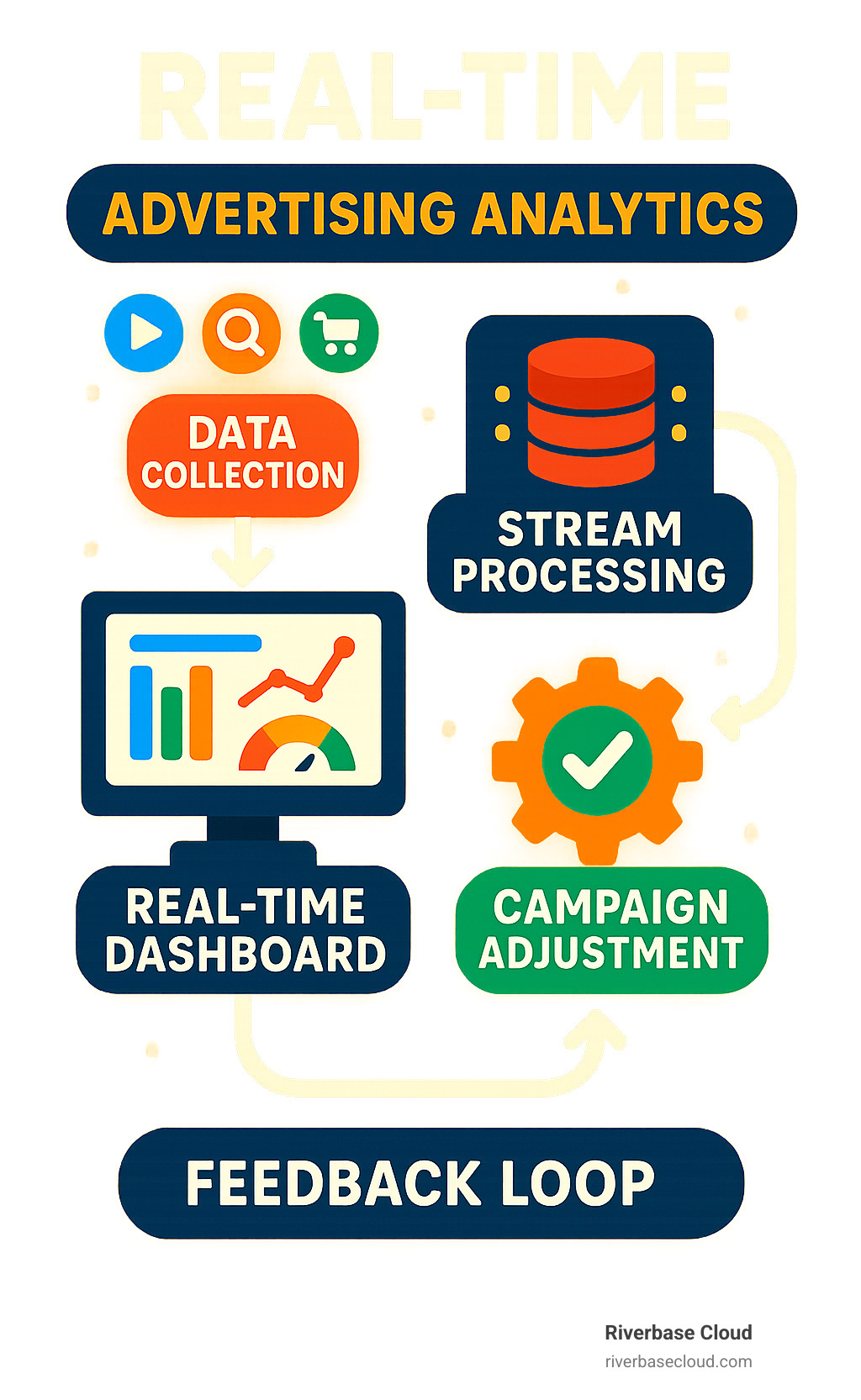
Quick real-time advertising analytics terms:
- AI-driven SEO tools
- AI-driven business growth
Real-Time Advertising Analytics Explained
Have you ever wished you could peek inside your customers' minds as they interact with your ads? That's exactly what real-time advertising analytics delivers—a live window into campaign performance that transforms how marketers make decisions.
At its heart, real-time analytics is about processing data the moment it arrives, not hours or days later. In the world of programmatic advertising, this happens in the blink of an eye.
"In real-time bidding environments, each auction must complete in under 300 milliseconds," as Hammond Guerin, Sr. Director of Analytics at a leading ad platform, puts it. "That's less time than it takes to blink, yet in that tiny window, entire data-driven decisions are made about which ads to show to which users."
Think of it as the difference between getting yesterday's weather report versus looking out the window to see if it's raining right now. The technology making this possible includes stream ingestion that processes billions of events per second, sub-second querying that analyzes massive datasets almost instantly, and a unified view that weaves data from multiple channels into one coherent picture.
Real-Time vs Traditional Analytics
The gap between real-time and traditional analytics isn't just about speed—it's about opportunity. When you're relying on traditional analytics, you're essentially driving while looking in the rearview mirror.
With traditional analytics, your data gets processed in batches—maybe hourly, daily, or even weekly. By the time you get insights, the moment to act has often passed. Your campaign might be stalling, but you won't know until you've already wasted precious budget.
Real-time analytics, on the other hand, puts you firmly in the driver's seat with a clear view through the windshield. You get immediate insights as events happen, allowing you to make continuous optimizations. This eliminates what we call the "decision lag"—that costly gap between when something happens and when you can respond to it.
One of our clients summed it up perfectly: "Before implementing real-time analytics, we were essentially flying blind for hours at a time. Now we can see turbulence forming and adjust our course immediately."
Where Real-Time Advertising Analytics Fits in the Customer Journey
Today's customer journey isn't a straight line—it's a complex web of micro-moments across devices and channels. Real-time advertising analytics helps you capture and respond to these moments as they unfold.
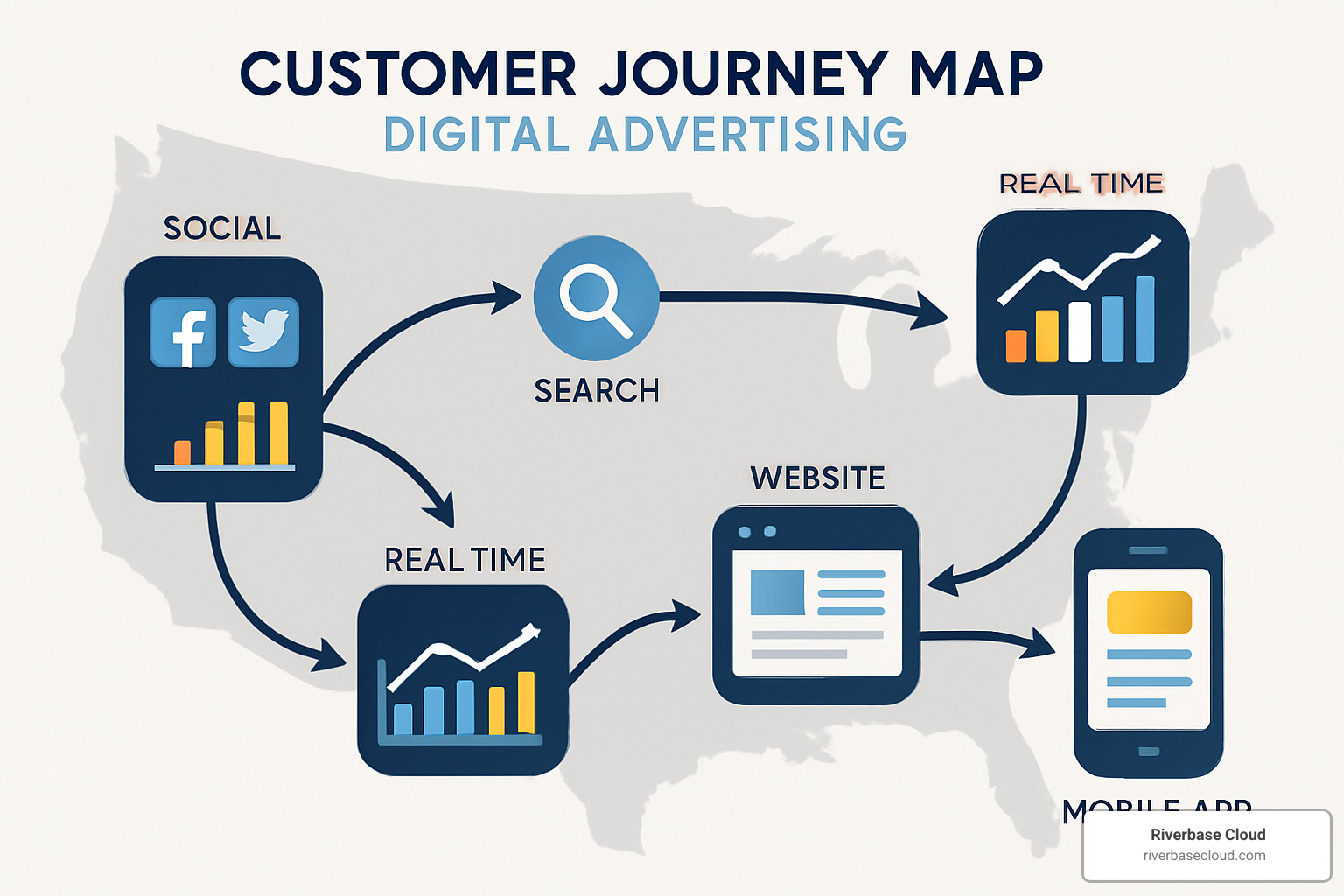
When a potential customer begins researching your product category, real-time analytics can detect this interest and trigger awareness content. As they move into consideration, the system recognizes comparison behaviors and can immediately serve up targeted comparison ads that position your offering favorably.
This is what marketers call touchpoint stitching—connecting data points across channels into a coherent customer view in real time. It enables personalization triggers that respond to behavior within seconds rather than hours.
For example, when a shopper abandons their cart, real-time analytics can immediately activate retargeting with a personalized incentive. Or if a customer has just had a service interaction, the system can pause promotional messages until the issue is resolved.
A retail client implemented this approach and saw their conversion rates jump by 27%. "It's like having a conversation with the customer," their marketing director told us. "If you wait too long to respond, the moment is gone."
Real-time analytics doesn't just speed things up—it fundamentally changes how we connect with customers by matching the pace of their decision-making in our increasingly on-demand world.
Why Real-Time Analytics Boosts Campaigns
When you accept real-time advertising analytics, you're not just getting faster data—you're fundamentally changing how your campaigns perform. It's like upgrading from a flip phone to a smartphone; suddenly, possibilities you never imagined become everyday realities.
Research from SAS shows that over 80% of business leaders are eager to generate real-time actions from customer data, and with good reason. The results speak for themselves:
Companies effectively using real-time analytics see remarkable improvements—significant ROI lifts on ad spend, a whopping 60% boost in customer retention, and the ability to create more dynamic, responsive customer experiences. They're also better at managing budgets proactively and catching fraud before it becomes costly.
As highlighted in the scientific research on real-time actions gap, the divide between organizations that act on data immediately versus those stuck in delay mode is becoming a crucial competitive advantage. It's not just about being faster—it's about being smarter with every marketing dollar.
Speed-to-Insight and ROI Gains
The financial impact of speed is game-changing. Imagine being able to analyze billions of advertising events in less time than it takes to snap your fingers. That's not science fiction—it's the reality of modern real-time advertising analytics.
We recently worked with a client who shared their change story after implementing real-time analytics. Their team went from waiting minutes for query results to getting answers in milliseconds. They could spot underperforming ads seconds after launch, automatically shift budget to channels that were crushing it, and ultimately boosted their ROAS by an impressive 32%.
This creates what we like to call "budget pacing efficiency"—spending each advertising dollar more effectively through continuous, on-the-fly optimization rather than making adjustments once a week or month.
At Riverbase Cloud, we've seen similar changes. One of our e-commerce clients using our Managed-AI ADS solution spotted a sudden shift in search behavior during their competitor's inventory shortage. Because they had real-time insights, they captured significant market share within hours—an opportunity that would have completely vanished with traditional weekly reporting.
Personalization & CX in Real Time
The most exciting part of real-time advertising analytics might be how it transforms customer experiences through genuine personalization. We're talking about going way beyond basic "Hello {First_Name}" tactics to create truly responsive experiences:
Behavior-based segmentation lets you adjust messaging based on actions a customer took seconds ago, not last week. Sentiment analysis helps you detect emotional signals and adapt your tone accordingly. And with dynamic creative optimization, you can assemble ad components on the fly based on exactly what will resonate with a user in that moment.
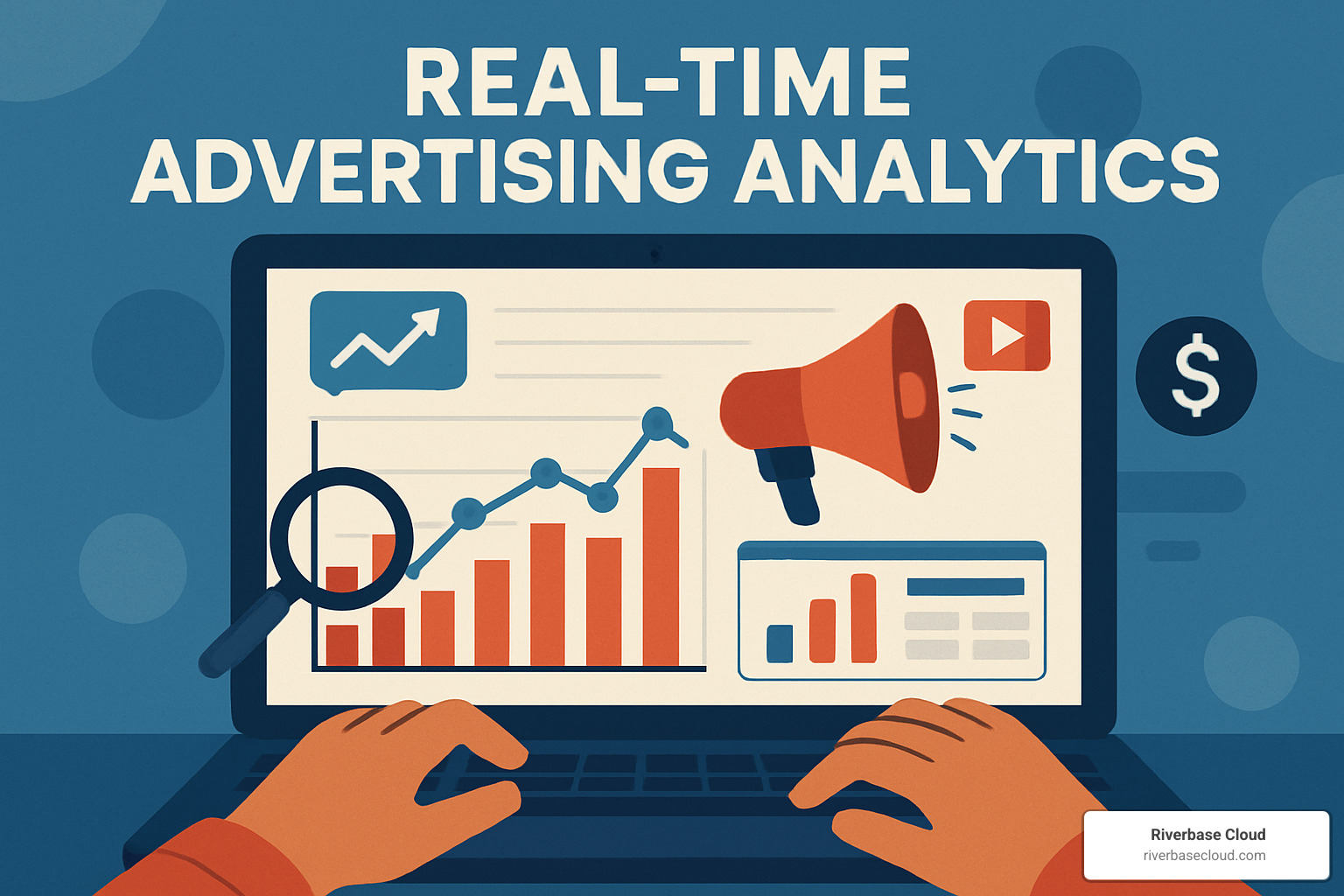
Take Reddit as an example—they generate tens of gigabytes of event data hourly from their ad platform. By implementing real-time analytics, they enable advertisers to run interactive queries across hundreds of billions of raw events, understanding and responding to user patterns as they emerge, not days later.
One of our travel industry clients uses social media sentiment signals to adjust their ad creative tone within minutes. When weather disruptions affect flights, their system automatically shifts from "Book your dream vacation!" to "We're here to help with your travel plans"—all driven by real-time data feeds.
As their CMO beautifully put it: "The difference between personalization and true real-time personalization is like the difference between sending a letter and having a conversation. One is a delayed monologue; the other is an immediate dialogue."
Building a Future-Proof Real-Time Analytics Stack
When it comes to creating a powerful real-time advertising analytics system, think of it like building a high-performance car – you need all the right parts working together perfectly. The technology behind these systems isn't just impressive – it's what makes the magic happen for your advertising campaigns.
Most effective real-time analytics setups include several key technologies working in harmony. Apache Kafka or Amazon Kinesis handle the constant flow of data (think millions of events per second), while specialized databases like Apache Druid let you query massive datasets almost instantly. Purpose-built tools like Sigview or Rill make complex analytics much simpler, and in-memory processing keeps your most important data ready for immediate access.
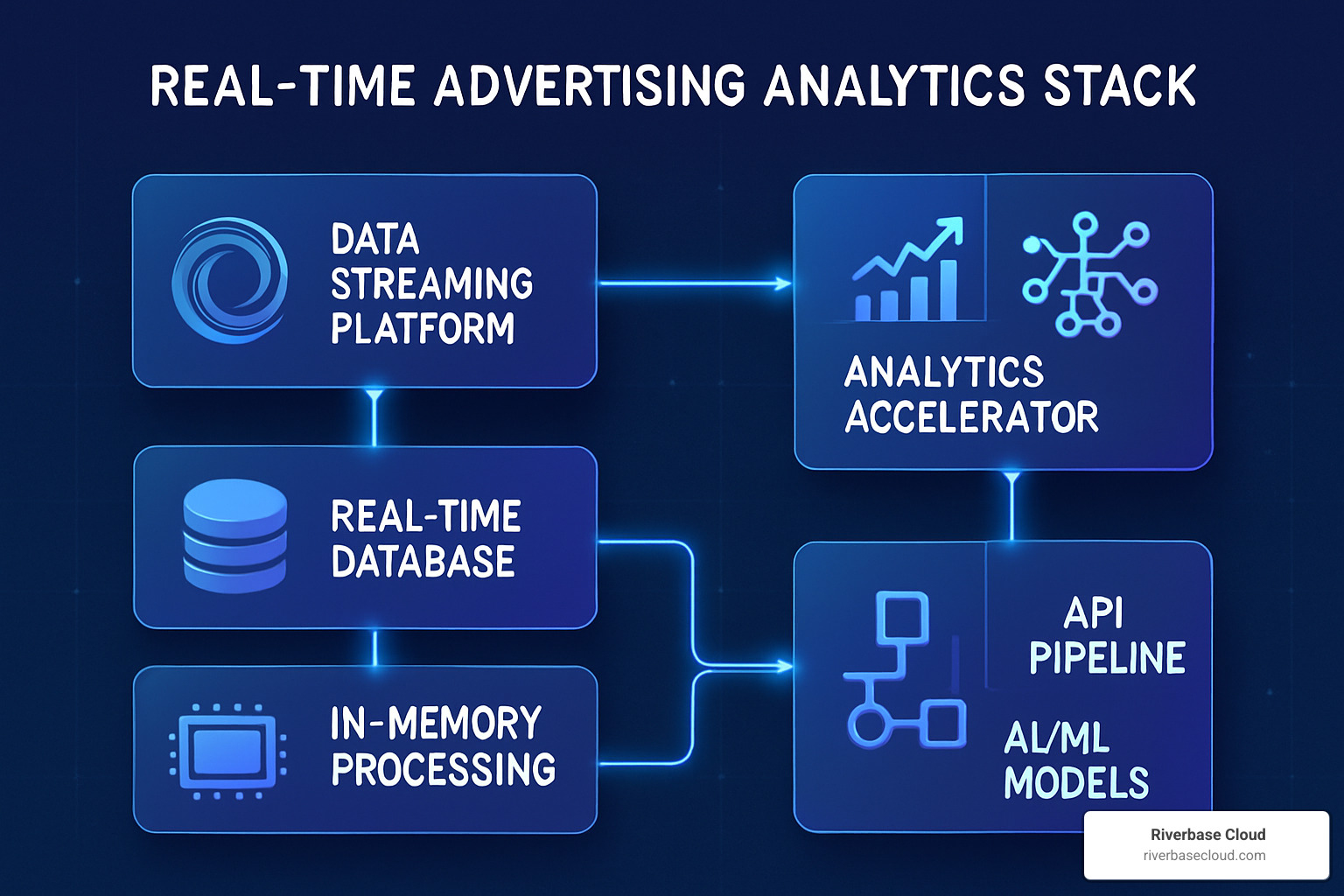
Every business has different needs, but the goal remains the same: get insights quickly, handle huge volumes of data, and keep everything running smoothly so you can make smart decisions in real time.
Core Components: Ingestion to Visualization
Let's walk through how data actually flows through a real-time analytics system – it's quite a journey!
It all starts with data capture – collecting signals from everywhere your ads appear and your customers interact. This means setting up tracking pixels on websites, connecting to advertising platforms through APIs, and creating event listeners that record user interactions within milliseconds.
Next comes the change stage, where all this raw data gets organized into usable formats. Modern systems often use the Extract, Load, Transform (ELT) approach instead of the traditional ETL process. As one of our clients explained: "Storing the raw data first and changing it later gives us much more flexibility for different types of analysis without sacrificing speed."
Finally, all this processed data needs to be accessible through interactive dashboards that update almost instantly. The best systems also include automated alerts that notify you when important metrics change significantly. One Sigview customer shared that "their faster query performance, alerting and reports generation saved our AdTech company up to $500,000 annually" – real money from real-time insights!
Choosing the Right Tools & Platforms
Picking the right technology for your business doesn't have to be overwhelming. It really comes down to three main factors:
First, consider your scale requirements. If you're running a small business, the analytics built into platforms like Google Ads might be enough to get started. Mid-sized companies often do well with cloud data warehouses paired with good visualization tools. Larger enterprises typically need custom-built real-time infrastructure to handle their data volume.
Second, think about how fast you really need insights. Standard business intelligence tools provide daily or hourly updates, streaming analytics can give you minute-by-minute data, and specialized in-memory systems deliver true sub-second responsiveness.
Third, look at your integration complexity. Are you advertising on just one platform, or do you need to combine data from multiple sources? Do you have standard data connections available, or will you need custom development?
At Riverbase Cloud, we've found that most small and medium businesses don't need the most complex solutions. Often, a smart combination of platform-native analytics improved with our Managed-AI solutions gives the perfect balance of real-time capability without excessive complexity or cost.
For more detailed guidance on tools that work well with advertising platforms, take a look at our Ultimate Software Guide for Google Ads Management.
AI & Machine Learning in Real-Time Advertising Analytics
Artificial intelligence is completely changing what's possible with real-time advertising analytics. Instead of just showing you what happened, AI can predict what will happen and automatically take action.
Predictive bidding uses AI models to forecast the perfect bid for each ad impression based on real-time signals and past performance. This means your campaigns can automatically adjust to changing conditions without constant manual oversight.
Anomaly detection algorithms spot unusual patterns that humans might miss – like a sudden drop in conversion rates or an unexpected surge in clicks from a particular region. These insights can alert you to both problems and opportunities that require immediate attention.
Perhaps most exciting is reinforcement learning, where systems continuously improve bidding and targeting strategies through feedback loops. They essentially learn what works in real time, getting smarter with every ad impression.
One of our AdTech clients put it perfectly: "The system learns faster than any human analyst could. It identifies patterns across thousands of variables simultaneously." But at Riverbase Cloud, we believe the best results come from combining AI's speed with human strategy. Our Managed-AI ADS solution gives you the best of both worlds – lightning-fast AI optimization with the crucial human oversight that ensures everything aligns with your actual business goals.
After all, while AI is incredibly powerful, it's the human touch that truly drives success in advertising – understanding your unique business needs and making sure technology serves your specific goals.
Turning Insights into Action: Metrics, Optimization & Attribution
The true power of real-time advertising analytics isn't just having data at your fingertips—it's what you do with it. When insights flow in continuously, smart advertisers create systems that turn those insights into immediate action.
Think of it as closing the loop between what you learn and how you respond. The most successful campaigns we've seen at Riverbase Cloud establish automatic triggers that adjust tactics on the fly. For instance, when a campaign's Click-Through Rate (CTR) suddenly dips below your target, your system might automatically refresh creative elements. Or when Return on Ad Spend (ROAS) exceeds expectations, budget allocation might increase to capitalize on that success.
"The difference between good and great advertising isn't just measurement—it's response time," one of our clients recently told me. "When we shortened our insight-to-action cycle from days to minutes, our campaign performance jumped by 22%."

Beyond the basics of CTR and ROAS, your real-time dashboard should keep a watchful eye on Conversion Rate (CVR), Customer Lifetime Value (LTV), viewability percentages, fraud indicators, and dynamic pacing metrics. These numbers tell the complete story of your campaign's health and opportunities.
Must-Track Real-Time Metrics
While you could drown in data, focusing on certain key indicators will give you the most actionable insights right when you need them:
Impressions & Reach serve as your campaign's vital signs. When delivery suddenly drops, it often signals technical problems that need immediate attention. One e-commerce client spotted a 40% impression drop within minutes of a tracking pixel issue, fixing it before it could significantly impact their weekend promotion.
Engagement Metrics reveal how your creative resonates with audiences in the moment. We've seen brands use real-time click and interaction monitoring to fine-tune messaging during live events, riding waves of audience interest as they form.
The Effective Cost Per Thousand Impressions (eCPM) metric helps publishers understand revenue efficiency across different placements. One media client uses hourly eCPM tracking to adjust their ad layout during traffic spikes, maximizing revenue during peak periods.
For programmatic campaigns, Auction Win Rate provides crucial feedback on bidding strategy effectiveness. Are you winning the right impressions at the right price? This metric tells the story in real time.
Path-to-Conversion Indicators track those small steps that lead to big purchases. Rather than waiting for final conversions, monitor micro-conversions that predict buying intent.
As our research partners at Improvado note in their guide to Digital Advertising Analytics metrics, smart marketers avoid viewing these numbers in isolation. The real story emerges from their relationships—like when high CTR pairs with low conversion rates, potentially signaling a disconnect between ad promises and landing page delivery.
Campaign Optimization & Budget Allocation Loops
With real-time advertising analytics, optimization becomes continuous rather than periodic. This happens through several powerful mechanisms:
Programmatic Bidding Adjustments work like a smart thermostat for your campaigns, making tiny adjustments constantly to maintain optimal performance. These algorithms often make thousands of micro-adjustments hourly, responding to shifting auction dynamics that human managers could never track manually.
Spend Rebalancing moves your budget where it works hardest. One retail client describes this as "money flowing to results like water finding the path of least resistance." Their system automatically shifts dollars from underperforming keywords to high-performers throughout the day.
Rule-Based Alerts act as your campaign's early warning system. When metrics cross thresholds you've defined, these notifications trigger review or automated actions. They're like having an extra team member who never sleeps, always watching for problems and opportunities.
I love how one of our fashion retail clients describes their approach as "dayparting on steroids." Instead of simply scheduling higher bids during presumed high-conversion hours, their system responds to actual performance signals in real time. "We used to assume evenings were always best for sales," their digital director explained. "Now our system might notice a midday surge on rainy Tuesdays and automatically increase spend during those specific windows."
For deeper strategies on optimization, our guide on Navigating Google Ad Campaign Management offers practical approaches that work with real-time data.
A/B Testing with Real-Time Advertising Analytics
Traditional A/B testing feels like watching paint dry compared to what's possible with real-time advertising analytics. The change is remarkable:
Rapid Iteration replaces weeks-long tests with dynamic evaluation that can identify winners in hours. One DTC brand we work with tests four headline variations simultaneously, with their system automatically detecting the 23% performance advantage of one version by lunchtime.
KPI Thresholds create automatic decision points. When a variation crosses your predefined performance benchmark, the system automatically increases its distribution, maximizing impact without waiting for manual review.
Creative Rotation adjusts dynamically based on performance signals. Rather than showing all variations equally, your best performers get more exposure while underperformers are gradually phased out. This creates a natural selection process for your creative that continuously improves results.
An e-commerce client using our Managed-AI CONTENT solution recently tested 16 different product page headlines simultaneously. "The old way, this would have taken months," their marketing manager told me. "Now we saw statistically significant results the same day, and our traffic automatically shifted to the winners. We're literally always showing our best-performing content now."
This speed-to-optimization doesn't just improve performance—it changes how teams work. When you know results will come quickly, you become more experimental, more creative, and ultimately more effective at connecting with your audience.
Challenges, Best Practices & Future Trends
Let's be honest - implementing real-time advertising analytics is a bit like trying to drink from a fire hose. The benefits are incredible, but there are plenty of problems along the way that can make even the most tech-savvy marketers feel overwhelmed.
In our work with clients, we consistently see several challenges emerge:
Data lives everywhere but talks to no one. These data silos prevent you from seeing the complete picture of your advertising performance. Meanwhile, finding people who understand both marketing and real-time data analysis feels like searching for unicorns. Add in the alphabet soup of privacy regulations (GDPR, CCPA), dashboard overload that makes your eyes glaze over, and teams that resist changing how they've "always done things," and you've got quite the obstacle course.
But don't worry - there's a clear path forward for companies willing to take the journey:

Common Obstacles and How to Overcome Them
Integration Challenges are almost universal when starting with real-time analytics. Getting your Google Ads, social platforms, website analytics, and CRM to share data in real-time can feel like trying to get toddlers to cooperate.
One media agency director we worked with put it perfectly: "We had data living in seven different platforms. The breakthrough came when we stopped trying to build a perfect system and instead focused on connecting our most critical data sources first, then expanding incrementally."
This pragmatic approach works wonders - start with connecting your highest-value data streams rather than attempting to boil the ocean.
Talent Shortages create another significant roadblock. The skills needed to implement and manage real-time analytics systems are in high demand and short supply. This is especially challenging for small and medium businesses that can't justify a full-time data science team.
This is precisely why we created our Managed-AI solutions at Riverbase Cloud. We combine AI-powered analytics with expert human oversight, giving you the insights you need without requiring you to become a data scientist overnight. Think of it as having a data team on demand, without the overhead.
Governance and Privacy concerns keep many marketing leaders up at night, and for good reason. With regulations constantly evolving, using customer data responsibly requires careful planning.
The most successful companies implement "privacy-by-design" principles from day one. This means building data protection into your analytics systems from the ground up - collecting only what you need, using it only for stated purposes, and managing consent properly. When done right, you can have both powerful analytics and strong privacy practices.
Building a Data-Driven Culture
I've seen many companies invest in amazing analytics technology only to have it gather dust because the people and processes weren't ready. The tech is just one piece of the puzzle.
Creating a data-driven culture starts with shared KPIs that matter across departments. When marketing, sales, and product teams are all looking at the same north star metrics in real-time, magic happens. Suddenly, everyone cares about the data because it directly connects to their goals.
Implementing unified dashboards that everyone can access and understand is equally important. Data shouldn't be locked away in the analytics department - it should be democratized so everyone can see how their work impacts results. The best dashboards I've seen are simple, visual, and tell a clear story about what's happening right now.
A telecommunications client transformed their entire approach with what they called "daily data dialogues" - quick 15-minute meetings where teams review real-time performance and make immediate adjustments.
"The key was making data accessible and actionable for everyone, not just analysts," their CMO explained to me. "When the creative team can see in real time how their work performs, it creates natural motivation to optimize."
Continuous learning is the final piece of the culture puzzle. Teams that thrive with real-time analytics accept experimentation, celebrate learnings (even from failures), and constantly refine their approach based on what the data tells them.
Future Innovations Shaping Real-Time Advertising Analytics
The future of real-time advertising analytics is incredibly exciting, with several innovations ready to transform how we understand and optimize advertising:
Edge AI is moving analytics processing closer to where data is created - on devices and sensors - reducing latency to near-zero. Imagine getting insights from in-store customer behavior before they even reach the checkout counter.
Cookieless ID Graphs are emerging as the answer to the death of third-party cookies. These new approaches to identity resolution help maintain personalization capabilities while respecting privacy regulations, using probabilistic matching and first-party data.
Convergent TV Analytics is finally bridging the gap between traditional TV and streaming platforms, giving advertisers a unified view of video campaign performance across all screens. This enables real-time optimization that wasn't possible when these channels were measured separately.
Autonomous Campaigns represent perhaps the most significant shift - self-optimizing advertising systems that make adjustments without human intervention, guided by business objectives you set. These systems don't just report what's happening; they take action to improve results based on real-time signals.
Even physical advertising is being transformed. Companies like Quividi use computer vision to analyze audience demographics in front of digital billboards, while INRIX provides traffic data that triggers different billboard creative based on current road conditions.
An INRIX representative shared a perfect example: "Imagine a billboard that shows a quick, simple message when traffic is flowing at 65 mph, but displays more detailed information when cars are moving at 5 mph. That's the power of real-time analytics in the physical world."
The future belongs to advertisers who can not only collect data in real-time but turn it into immediate action that improves customer experiences and campaign performance. With the right approach to overcoming challenges and embracing innovation, your business can be among them.
Conclusion
Real-time advertising analytics has transformed from a nice-to-have competitive edge to an absolute necessity in today's digital marketing world. When you can collect, analyze, and act on data as it's happening, your advertising shifts from occasional tweaking to an always-on optimization machine.
After exploring this landscape together, here's what stands out:
The value of speed cannot be overstated. Those precious moments between finding an insight and taking action directly impact your campaign's success. The faster you can adapt, the more effective your advertising becomes.
Integration isn't just technical jargon—it's the backbone of making real-time analytics work. When your data sources, tools, and teams connect seamlessly, you eliminate those frustrating delays that cost you money and opportunities.
The most successful organizations understand that fancy technology alone isn't enough. You need a culture that accepts quick decision-making and values agility. As one client told me, "The dashboards were impressive, but what really changed our results was teaching our team to trust the data and act on it immediately."
The human-AI partnership creates magic in this space. While artificial intelligence excels at processing massive amounts of data instantly, human strategists provide the context, creativity, and business understanding that gives those insights meaning. It's not about replacing people—it's about supercharging them.
Looking ahead, we're moving toward increasingly autonomous advertising systems that optimize themselves based on your business goals. Imagine campaigns that learn, adapt, and improve with minimal intervention, freeing you to focus on strategy and creativity.
At Riverbase Cloud, we've built our Managed-AI solutions with these principles at the core. We wanted to make sure small and medium businesses could harness the power of real-time advertising analytics without needing to build complex technical infrastructure from scratch.
Our Managed-AI Dashboard brings all these insights together in one place, allowing you to take action in seconds rather than hours or days. You can see it in action here: dashboard analytics
Transitioning from periodic reporting to real-time optimization is a journey. Start small by identifying the metrics that matter most to your business. Implement real-time monitoring for those key indicators, then gradually expand as you demonstrate the return on investment.
The bottom line? In advertising, how quickly you can make informed decisions directly impacts how effectively you spend your budget. Real-time advertising analytics isn't just about understanding what already happened—it's about actively shaping what happens next.
When you can respond to opportunities in moments rather than days, you're not just keeping up with the competition—you're staying several steps ahead.
